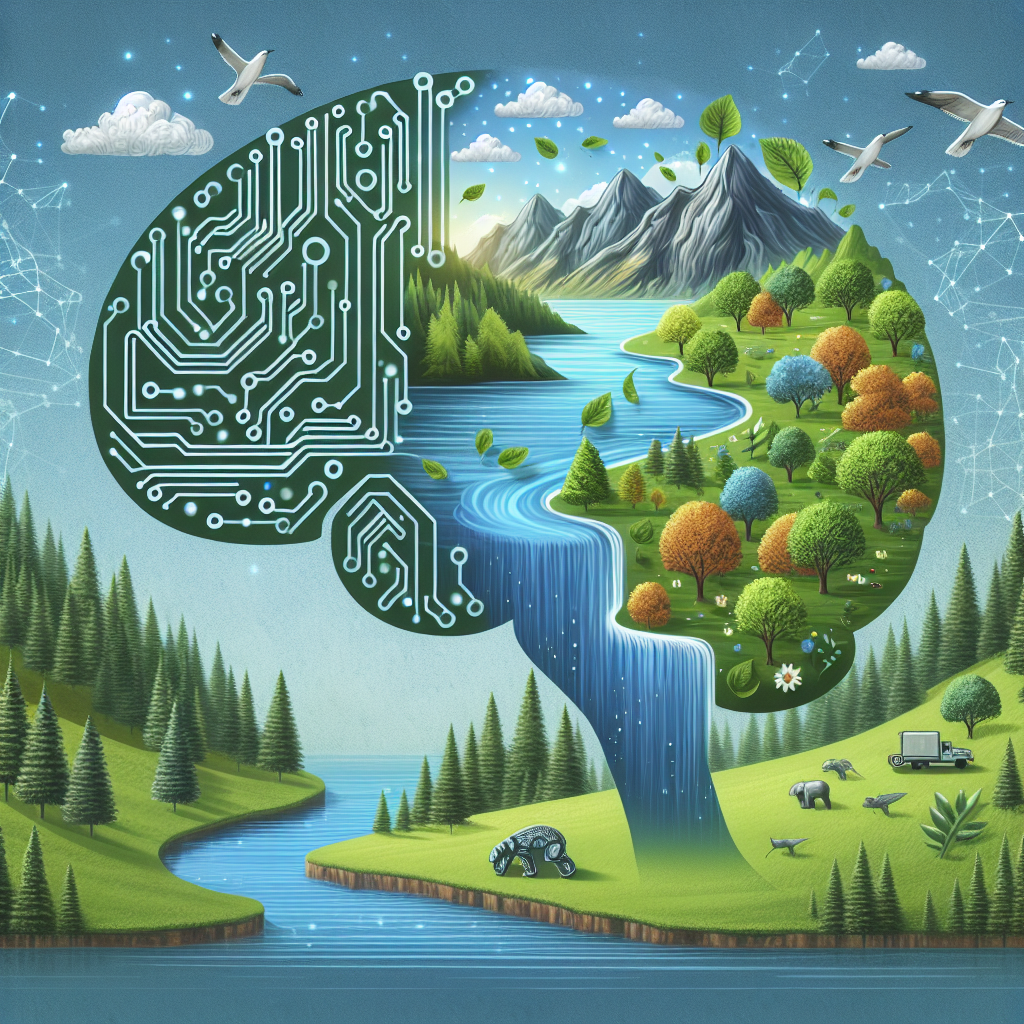The Impact of AI-driven Solutions on Environmental Conservation
In recent years, the use of artificial intelligence (AI) has become increasingly prevalent in various industries, including environmental conservation. AI-driven solutions are being utilized to help monitor and protect the environment in ways that were not previously possible. From tracking animal populations to pinpointing areas of deforestation, AI is revolutionizing the way we approach conservation efforts.
One of the key benefits of using AI in environmental conservation is its ability to process and analyze vast amounts of data quickly and accurately. This allows researchers and conservationists to identify patterns and trends that may not be immediately apparent to the human eye. For example, AI can be used to analyze satellite imagery to detect changes in land cover over time, such as deforestation or urbanization. This information can then be used to inform conservation strategies and land use planning.
AI is also being used to monitor and protect endangered species. By analyzing data from camera traps and acoustic sensors, AI can help researchers track the movement and behavior of animals in the wild. This information is crucial for understanding the threats facing endangered species and developing strategies to protect them. AI can also be used to predict the likelihood of human-wildlife conflicts, allowing conservationists to take proactive measures to prevent these conflicts from occurring.
In addition to monitoring wildlife, AI is also being used to monitor and manage natural resources. For example, AI-driven solutions can help optimize the use of water resources by predicting water demand and identifying areas of water scarcity. This information can then be used to inform water management strategies and conservation efforts. AI can also be used to monitor air and water quality, detecting pollutants and identifying sources of contamination.
Overall, the use of AI-driven solutions in environmental conservation has the potential to greatly improve the effectiveness of conservation efforts. By providing researchers and conservationists with valuable insights and data, AI can help us better understand and protect the natural world. However, there are also challenges and limitations to consider when using AI in conservation efforts.
Challenges and Limitations of AI in Environmental Conservation
While AI has the potential to revolutionize environmental conservation, there are also challenges and limitations to consider. One of the main challenges is the need for high-quality data to train AI algorithms. In order for AI to be effective in conservation efforts, it requires large amounts of high-quality data to learn from. This can be particularly challenging in remote or inaccessible areas where data collection is limited.
Another challenge is the potential for bias in AI algorithms. AI algorithms are only as good as the data they are trained on, and if that data is biased or incomplete, it can lead to inaccurate or unfair results. For example, if AI algorithms are trained on data that only represents certain species or habitats, they may not be effective in predicting threats to other species or ecosystems.
There are also ethical considerations to take into account when using AI in conservation efforts. For example, there are concerns about the privacy of individuals who may be captured in camera trap images or other monitoring data. There are also questions about who owns the data collected by AI-driven solutions and how it should be used and shared.
Despite these challenges and limitations, the potential benefits of using AI in environmental conservation are significant. By harnessing the power of AI, we can better monitor and protect the natural world, leading to more effective conservation strategies and better outcomes for wildlife and ecosystems.
FAQs
Q: How is AI being used to monitor wildlife populations?
A: AI is being used to analyze data from camera traps and acoustic sensors to track the movement and behavior of animals in the wild. This information is crucial for understanding the threats facing endangered species and developing strategies to protect them.
Q: Can AI help predict and prevent human-wildlife conflicts?
A: Yes, AI can be used to predict the likelihood of human-wildlife conflicts by analyzing data on animal behavior and human activity. This information can help conservationists take proactive measures to prevent conflicts from occurring.
Q: What are some of the challenges of using AI in environmental conservation?
A: Some of the challenges of using AI in environmental conservation include the need for high-quality data to train algorithms, the potential for bias in AI algorithms, and ethical considerations around data privacy and ownership.
Q: What are some of the potential benefits of using AI in environmental conservation?
A: Some of the potential benefits of using AI in environmental conservation include more efficient monitoring of wildlife populations, better management of natural resources, and improved conservation strategies based on data-driven insights.

